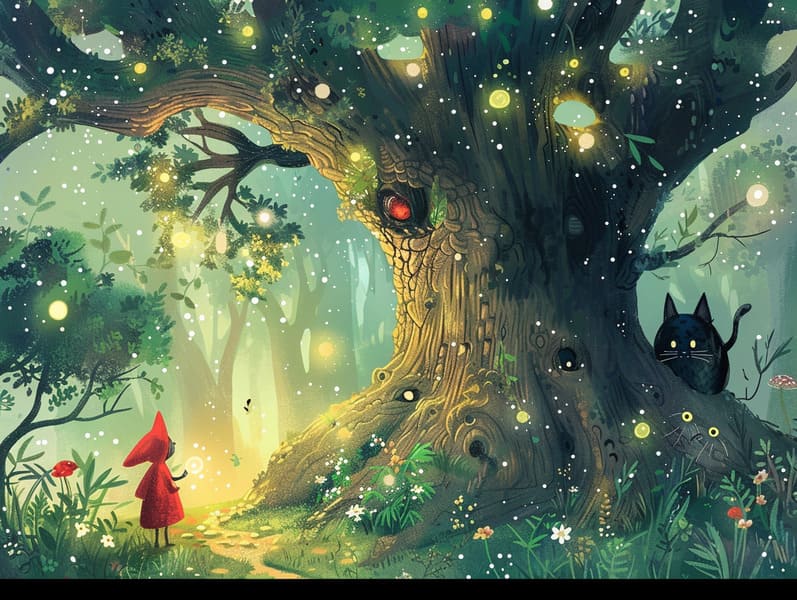
Timeless fairy tales have historical significance. These stories have been transmitted from one generation to the next millennia before they were ever put on paper. They developed from a variety of societies, including Middle Eastern traditions. They were initially disseminated among grown-ups, often carrying themes and messages reflective of the societal norms and beliefs of the time.
The renowned Brothers Grimm, Jacob and Wilhelm (the Grimm brothers), were among the first to gather many of these beloved narratives. Their volume, "Grimm's Fairy Stories," included classics like "Ashenputtel," "The Bread Crumb Trail," and "Snow-White and Rose-Red," which have since become classics in the world of timeless fairy tales. Similarly, the Danish author's charming stories, such as "The Sea Maid," and "The Duckling that Could," have gained the love worldwide, securing their place in the pantheon of beloved fairy tales.
Despite being ancient, classic fairy tales remain as impactful as ever, especially as bedtime stories for kids. These delightful tales are now available in many formats, including colorful picture books, enchanting animations, and internet fairy tales.
Their unwavering allure can be traced to several charming aspects:
Significant Morals: Ancient fairy tales often teach important moral lessons. Narratives like "The Tale of the Boy Who Cried Wolf" teach the virtue of honesty, while "The Hare and the Tortoise" exemplify the values of determination and humbleness. These narratives offer the young clear distinctions between correct and incorrect, helping to shape their moral compass in a kind yet significant way.
Empathy and Understanding: Traditional fairy tales frequently involve heroines facing challenges and problems, motivating readers to empathize with their struggles and back their triumphs. For instance, "Beauty and Her Beast" points out the virtue of looking deeper to understand the true essence of a soul, building sympathy and perception.
Cultural Knowledge: Many ancient fairy tales are rich in the cultural contexts from which they grew. Immersing in these tales can provide delightful insights into different historical contexts, enhancing a sense of cultural insight and acknowledgment.
Inventiveness and Fantasy: The enchanted elements in old fairy tales—enchanted lands—fire up children’s visions and dreams. These tales bring readers to extraordinary realms, boosting innovative dreams and a sense of wonder that persists a lifetime.
Ancient fairy tales are not only magical but also enlightening. They work as charming tools in promoting various cognitive and emotional skills in the young. When ancient fairy tales are spoken, they strengthen language acquisition by showing new language and elaborate sentence structures. This practice also strengthens hearing abilities and focus, as the young hang on every word, enthusiastic to see what happens next.
Furthermore, debating the themes and characters of classic fairy tales can advance cognitive skills and reasoning skills. Young ones are shown to discern patterns, forecast, and grasp cause and effect. These contemplations also facilitate young readers utter their thoughts and feelings, contributing to their emotional intelligence.
In today’s high-tech era, the availability of online fairy tales has made these stories more obtainable than ever. Web platforms and web apps supply broad selections of traditional fairy tales that can be looked at or played anytime, anywhere. Fairy tales told out loud are particularly liked, offering an entertaining method for young readers to take part in these alluring stories. Spoken stories and spoken videos take characters and settings to life, often complemented by charming sound effects and musical scores that amplify the tale-telling adventure.
The timeless appeal of classic fairy tales lies in their ability to modify to contemporary times while holding onto their core values. Contemporary updates of these narratives often show more inclusive figures and modern settings, making them relevant to today’s audience. However, the fundamental themes of valor, compassion, and impartiality remain unchanged, continuing to connect with kids of all ages.
Traditional fairy click here tales also offer a sense of security and comprehensibility. They deliver a tidy narrative with a straightforward beginning, middle, and end, often finishing with the termination of conflicts and the triumph of righteousness over wickedness. This steadiness can be heartening for kids, granting a sense of consistency in an always shifting world.
Timeless fairy tales continue to enchant and enlighten new generations, maintaining their radiance and relevance in modern society. As bedtime stories for kids, they deliver up a perfect blend of charm and understanding, enhancing moral values, empathy, and creativity. The prevalence of online storybooks and the commonness of fairy tales voiced promise that these ancient stories remain accessible to new generations.
By continuing and recounting these fairy tales, we continue to recognize the rich tapestry of lore and cultural heritage. Whether you are accessing a colorful picture book, exploring a electronic collection, or listening via an narrated book, the enchantment of classic fairy tales is always within reach. These tales emphasize of the endless nature of storytelling and its ability to unite us across epochs and places.
No matter if you are seeing a richly illustrated book, delving into a digital library, or listening to an sound book, the attraction of ancient fairy tales is always within reach.
These tales illustrate of the unchanging nature of fairy tales and its ability to hold us together across time and space, forming a connection that fascinates and enlightens alike.